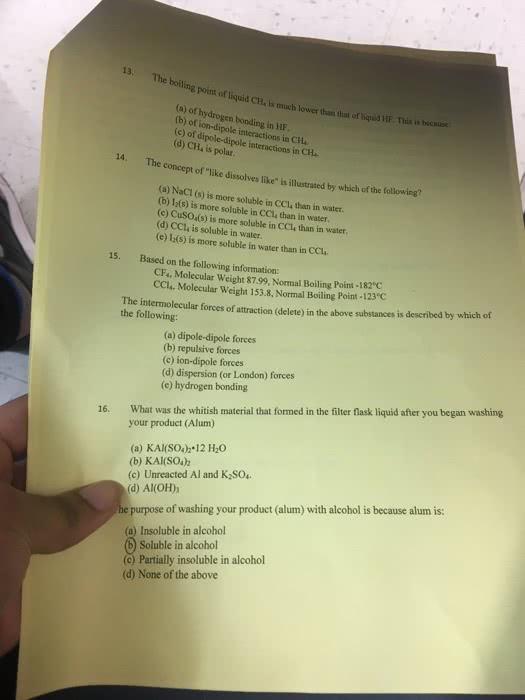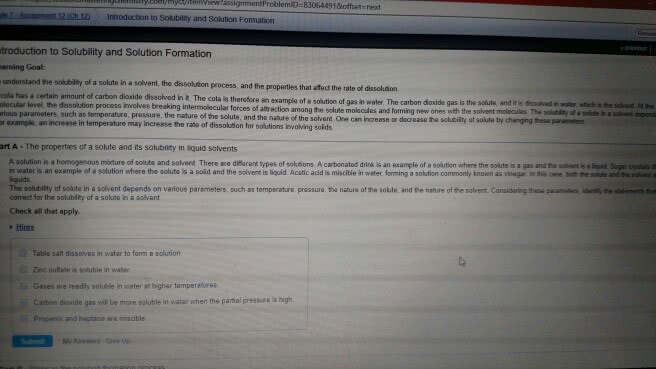01:160:162 Study Guide - Midterm Guide: Mole Fraction, Aqueous Solution, Intermolecular Force
Document Summary
Aqueous solution water is the solvent, and a solid, liquid or gas is the solute. Composed of solute(s) dissolved in a solvent. Amount of a substance that dissolves in a given amount of solvent. When one substance (solute) dissolves in another (solvent) When both solute and solvent are liquids. When one substance doesn"t dissolve in another. Intermolecular forces b/t solute & solvent particles. Dispersion forces that hold together in liquid, solid and solution phases. Hydrogen molecules containing h bonded to f, n or o. Ion-dipole mix of ionic compounds and polar compounds. Halogens, noble gases, non polar molecules (like carbon compounds) 2 factors that allow formation of solution. Occurrence intermolecular forces between solute and solvent particles. Measure of energy dispersal in a system. Increased entropy is the driving force for many physical and chemical processes. Solution may form depending on relative magnitudes. If it forms cold to the touch; entropy is driving force.



